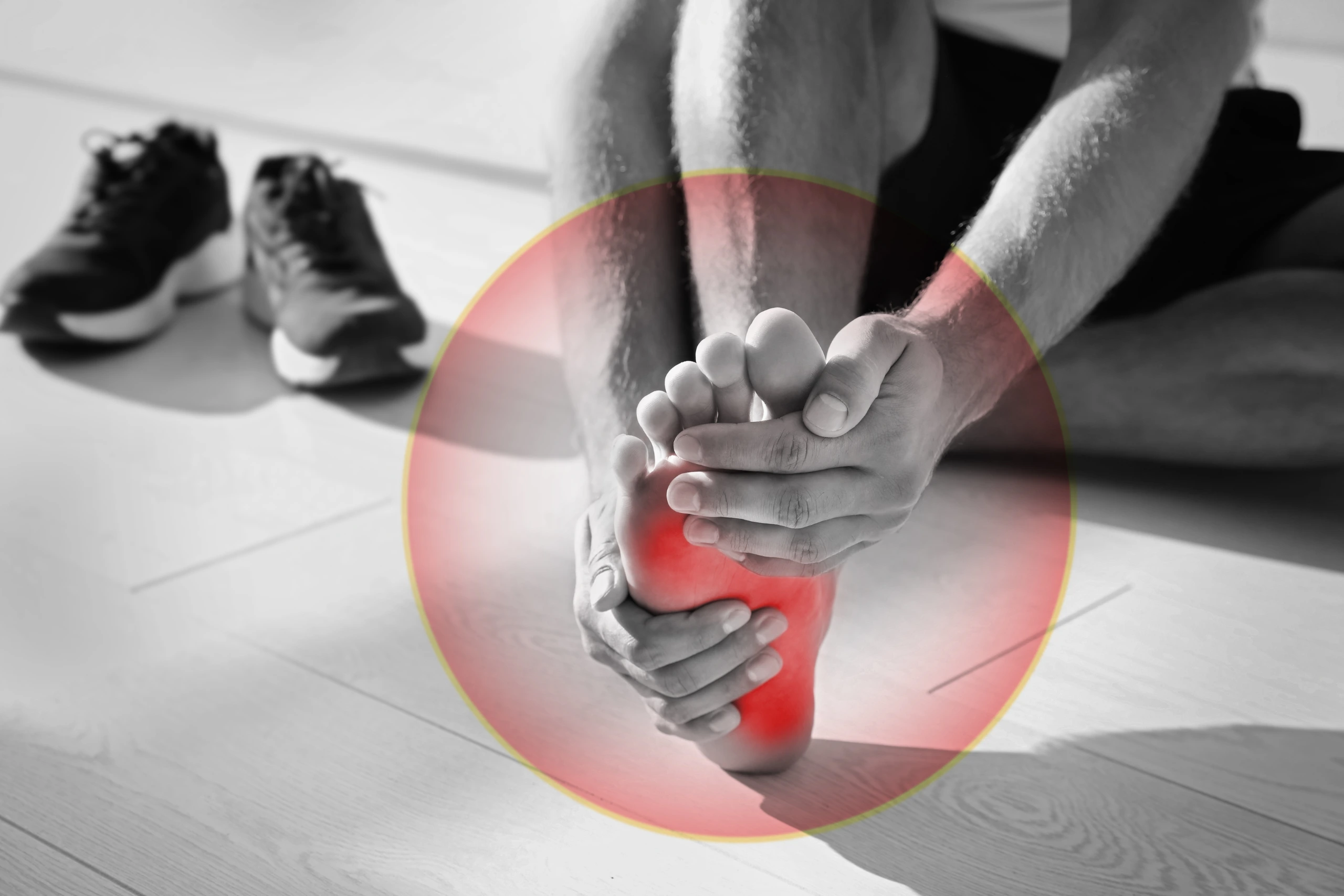Plantar fasciitis: Easy steps to help alleviate your pain.
Plantar fasciitis is described as pain in the heel and arch of the foot that affects day to day activities. Overall it is an extremely common cause of foot pain in adults. Plantar fasciitis’ typical presentation includes increased pain with the first few steps in the morning, less severe pain during the day and pain at night when resting. The good news is plantar fasciitis can heal with time even when it isn’t treated. That being said, symptoms usually resolve more quickly when the time between the pain beginning and treatment is shortest and with conservative care approximately 80% of patients report improvement of all symptoms.
The Anatomy:
To best understand this condition it’s important to take a look at the anatomy of the foot. The Plantar Fascia is fascial tissue that runs from the medial tubercle of the calcaneus (the heel) to the base of all 5 toes. Fascia is a type of connective tissue that tightens under pressure. It has a very intricate nerve supply that is susceptible to pain. The role of the plantar fascia is to create and support the longitudinal arch of your foot. It provides static support along with dynamic shock absorption with each step. In short the Plantar Fascia is a support system for the arch of your foot that tightens with each step to stop your foot from collapsing.
Risk Factors:
There are some predictive factors that can contribute to one’s risk of experiencing Plantar Fasciitis. Some of the predictive factors include:
- Pes Planus (flat feet)
- Over pronation
- Leg Length Differences
- Tight Gastrocs (calves)
- Tight Achilles Tendon
- Increased weight bearing activities (jumping, running, excess walking)
- Obesity
It is most commonly a combination of these factors that leads to injury. Above all, repetitive overuse in combination with any of these biomechanical concerns is what can lead to micro-tears and an overuse injury. A diagnosis of Plantar Fasciitis typically doesn’t require any imaging. In other words, a qualified medical professional has the ability to test for and diagnose Plantar Fasciitis in office.
Chiropractic care helps to treat and eliminate plantar fasciitis and its associated symptoms. Typically the treatment approach includes a multitude of different modalities to tackle all aspects of the injury. In addition to treatment, the self care and rehab plays a large role in recovery.
Plantar Fasciitis Treatment Options:
- Stretching: Loosening up the entire posterior chain (back of the leg) including the hamstring, calf, Achilles tendon and plantar fascia. In other words, by stretching and lengthening these tissues it decreases the pull on the fascia of the foot. In addition to stretching you can use a Foam Rolling Ball to release the tension in the bottom of the foot.
- Strengthening: Strengthening the muscles of the anterior (front) shin, the intrinsic foot muscles and ankle invertors and evertors. Strengthening the muscles of the foot and ankle decreases the demand on the plantar fascia.
- Ice and pain management: Icing the plantar fascia to help alleviate pain and inflammation can help with symptom control. (pro tip: Freeze a water bottle and use it to roll under the painful foot)
- Shoe modifications: Taking the time to evaluate your current footwear is important. Switching to more supportive shoes, wearing shoes indoors and updating to new shoes are all valuable options.
- Orthotics: Orthotics are an effective tool at helping with symptom management and helping relieve the pain associated with Plantar Fasciitis. To clarify, by supporting the arch of the foot, the orthotic decreases the demand put on the fascia during walking and running.
- Medical Referral: Corticosteroid injections and surgery are a last resort which may help alleviate the pain. However, the chances of complications is greater with medical intervention. This option is used when all other treatment options have been exhausted.
In conclusion Plantar Fasciitis is a painful foot condition that can dramatically impact day to day living. By seeking care quickly after the symptoms arise you increase your chances of a quicker recovery. Wondering if your Plantar Fascia is the cause of your foot pain? Contact us today for a consultation with one of our Chiropractors.
*As an Amazon Associate we earn from qualifying purchases.
References https://www.aafp.org/afp/2001/0201/p467.html


